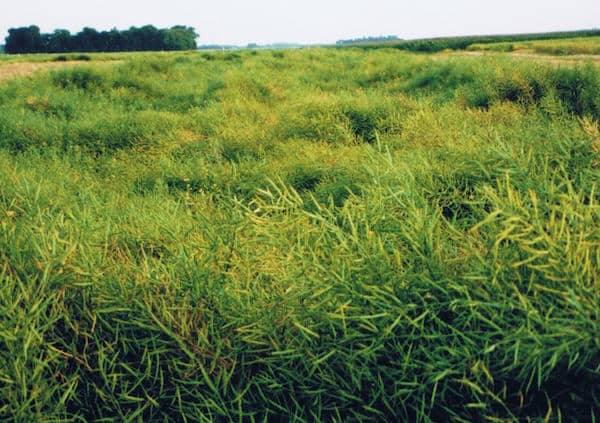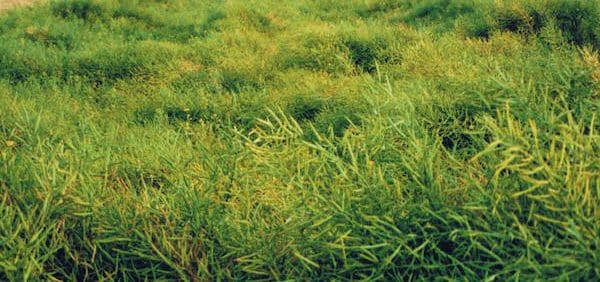Lodging is when plants fall over, making them more difficult to harvest. Key plant characteristics that affect lodging risk are the strength of the stem and anchorage, canopy height and canopy weight. Length and stiffness of the tap root is an important characteristic determining anchorage strength.

Several environmental and agronomic factors affect lodging risk in canola. These include wind, rain, temperature at flower, variety, plant population density, nitrogen nutrition, stem diseases and insect feeding. It is likely that a combination of genetic, agronomic and environmental factors cause the wide variation in the relative risk of stem and root lodging in canola, as they do in wheat. Lodging has been shown to reduce canola yields by 16 to 50 per cent.
Increased plant to plant contact as a result of lodging can also increase disease spread, particularly for sclerotinia stem rot and alternaria.
Canola cultivars are often scored for lodging resistance, with comparisons done during WCC/RRC registration trials. Canola Performance Trials (CPT), which compare leading commercially-available hybrids, also provide a lodging score based on the degree of lean relative to the lower stem of the plant. Scores are between one and five, with five being completely flat. For CPT, lodging scores are recorded at time of swathing. (See the CPT protocols for more on lodging ratings.)
Lodging causes
Seed/genetics factor. Some cultivars are weaker-stemmed. When all else is equal, as in WCC/RRC trials, some cultivars are taller or weaker stemmed and more inclined to lodge. If lodging is a common problem, perhaps look for cultivars with a stronger lodging resistance rating.
Diseases. Diseases that weaken stems and roots can cause lodging. Most of the major diseases would fall into this group, so if you see lodged canola, check for clubroot, blackleg, sclerotinia stem rot and root rots. Scouting tips.
Insects. The only insect that could cause major root or stem failure is root maggot, but root maggots are rarely implicated as a cause of lodging. Root maggot feeding usually leads to increased root rot damage as well.
Fertility issues. Plants weakened by nutrient deficiency can have stems prone to lodging. On the other hand, excess nutrients that cause plants to grow long and leggy can also make them more prone to lodging. Nutrient deficiency diagnosis.
Plant stands. Stands with more than 14 plants per square foot will have thinner and weaker stems than stands in the ideal range (five to eight per square foot). Canola volunteers may impact the number of plants too. Low plant stands (less than two per square foot) as well can have lodging issues where large bushy plants without neighbouring plants to support them tend to fall over.
Temperature. Hot temperatures during flowering have also been shown to increase lodging risk.
A good crop. Top heavy crop with lots of pods can be pushed over in heavy wind and rain. If crop is left for straight combining, some degree of lodging (sometimes called “tabling”) can actually benefit by knitting the crop and making it less prone to wind damage.

